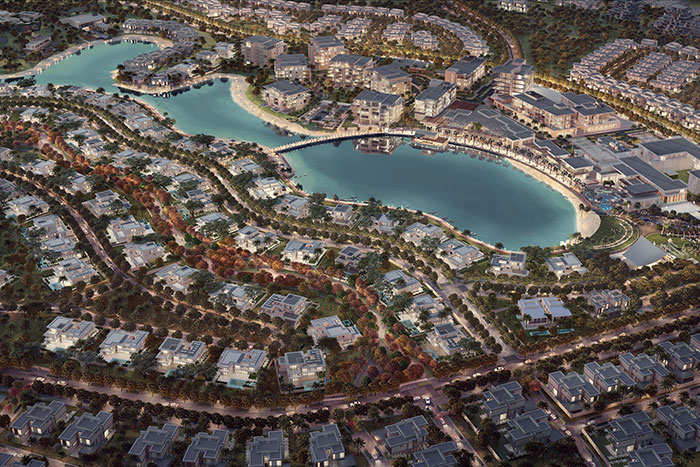Majid Al Futtaim sets ambitious sustainability targets for Tilal Al Ghaf development
 Other News
Other News Subscribe to newsletter
Subscribe to newsletter
| 11 Jun 2018 |
Majid Al Futtaim, the leading shopping mall, communities, retail and leisure pioneer across the Middle East, Africa, and Asia, is setting ambitious sustainability targets for its new flagship Dubai community, Tilal Al Ghaf, with plans to become the first mixed-use development in the emirate to achieve a ‘very good’ rating under the BREEAM sustainability accreditation programme. Energy, water and waste are among key metrics measured to enhance the community’s environmental, social and economic sustainability performance as per BREEAM’s assessment.
Extensive on-site generation of solar power will be a key pillar of Tilal Al Ghaf’s sustainability strategy. Majid Al Futtaim aims to produce 20 percent of the community’s energy needs from renewable solar power, transferring surplus electricity to DEWA through the Shams Dubai initiative which went live in 2017. To achieve this, the first offering of upper-luxury villas and bungalows, launched in April 2018, will offer rooftop photovoltaic solar panels as a standard feature, providing 45 percent of energy needs, along with solar hot water heating and top-notch air conditioning systems. In addition, solar panels will be offered as options on other single-family buildings, and installed on public buildings across the community. Public spaces will be lit by solar-powered streetlights and renewable energy will be deployed alongside smart technology to reduce energy consumption.

“Majid Al Futtaim sets itself apart by not just selling bricks and mortar, but also making a steadfast commitment to the community beyond delivering homes by setting long-term goals to enhance its green footprint,” said the CEO of Majid Al Futtaim Communities, Hawazen Esber. “We are taking an ambitious but practical, viable, and achievable approach to sustainability that will not only have environmental benefits, but in the long-run will also deliver financial savings for residents to create a healthy and balanced community living.”
Other environmental targets include a 55 percent reduction in the project’s carbon footprint, and 25 percent reduction in potable water demand. All water bodies, such as the fully swimmable Crystal Lagoon, will be topped up using ground water. This will relieve pressure on the water table, which is rising across much of Dubai. Homes will be fitted with water filters to provide pure drinking tap water and reduce consumption of bottled water, potentially saving 200 tonnes of plastic waste every year. During building, 60 percent of construction waste will be diverted from landfill, and 30 percent of waste will be recycled during operation, with 80 percent of organic waste recycled as compost for the community’s parks and gardens.
The community name itself – Tilal Al Ghaf – represents a link to environment and heritage, inspired by the indigenous Ghaf tree which is a symbol of the UAE. Extensive plantings of indigenous Ghaf trees will be provided across the community to encourage a sense of connection to the national natural landscape, as well as preserving these significant environmental resources.
“There is a growing number of consumers who want to make positive change in their world and in their community, and Majid Al Futtaim supports that in our vision for Tilal Al Ghaf,” said Hawazen Esber. “Our initial offering of Harmony and Serenity villas and bungalows will provide quality that lasts, and residents see eco-features such as solar power as making an important investment in the future, taking a step beyond merely buying fashionable luxuries for today.”
Spanning three million square metres at the intersection of Hessa Street and Sheikh Zayed Bin Hamdan Al Nahyan Street, near Dubai Sports City, Tilal Al Ghaf is a phased project that will include more than 6,500 freehold homes when complete by 2027, ranging from apartments, townhouses and bungalows, through to substantial luxury villas.
Homes will be set in a series of walkable neighbourhoods connected by pathways, natural open spaces, and neighbourhood parks. Around 355,000 square metres of landscaped open space will include green spaces and play areas, 18km of walkable trails and 11km of cycling paths provided with bicycle sharing facilities for the residents and visitors to use. The centrepiece for the landscaping will be Lagoon Al Ghaf, a 70,000 square metre swimmable Crystal Lagoon, complete with 400 metres of beachfront and 1.5km of walkable waterfront, enabling a wide range of water sports.




